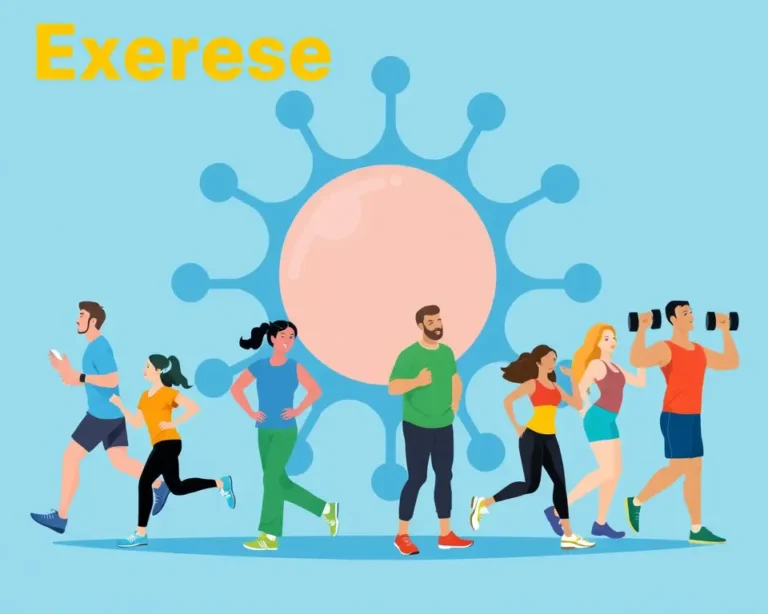For individuals managing diabetes or simply aiming to maintain stable blood sugar levels, understanding the relationship between exercise and glucose is crucial. Physical activity can significantly impact your blood sugar, but the nature of that impact depends on various factors.
How Exercise Affects Blood Sugar
Exercise influences blood glucose levels in several ways:
- Increased Insulin Sensitivity: Exercise enhances your body’s sensitivity to insulin, allowing muscle cells to utilize available insulin more effectively to uptake glucose during and after activity. This can last for up to 24 hours or more.
- Insulin-Independent Glucose Uptake: When muscles contract during exercise, cells can absorb glucose and use it for energy, regardless of whether insulin is available. This mechanism helps lower blood glucose in the short term.
- Glucose Utilization: Active muscles use sugar as an energy source, preventing sugar build-up in the blood.
Understanding the Variables
The effect of exercise on blood sugar varies based on several factors:
- Type of Exercise: Different exercises impact blood sugar differently.
- Intensity and Duration: The more strenuous and longer the workout, the more prolonged the effect on blood sugar.
- Fitness Level: Your fitness level influences how your body responds to exercise.
- Medications: If you take insulin or other glucose-lowering medications, exercise can increase the risk of hypoglycemia if dosages aren’t adjusted.
- Timing: The timing of exercise in relation to meals and medication can influence blood sugar responses.
- Stress: Stress can impact blood sugar levels.
- Weather: External factors such as the weather may also have an impact.
Potential Blood Sugar Responses to Exercise
Be aware of the following potential responses:
- Hypoglycemia (Low Blood Sugar): Exercise can lower blood sugar, potentially leading to hypoglycemia, especially for those taking insulin or sulfonylureas.
- Hyperglycemia (High Blood Sugar): Certain types of exercise, like heavy weightlifting or sprinting, can sometimes raise blood sugar due to the release of stress hormones like adrenaline.
Monitoring Blood Sugar and Exercising Safely
- Check Blood Sugar Levels: Monitor your blood sugar before, during, and after exercise to understand how your body responds.
- Consult Healthcare Professionals: Before starting a new fitness program, especially if you have type 1 diabetes, consult your healthcare provider.
- Individualized Management Plan: Work with a healthcare professional to create an individualized diabetes management plan.
- Medication and Food Adjustments: Depending on your treatment plan, your healthcare provider may advise adjusting medication dosages or food intake before exercise.
- Carry a Fast-Acting Carbohydrate: Always carry a source of fast-acting carbohydrates to treat hypoglycemia if it occurs.
Exercise Recommendations
- Aerobic Exercise: Aim for at least 150 minutes per week of moderate-to-vigorous intensity aerobic activity, such as brisk walking, swimming, cycling, or dancing.
- Strength Training: Incorporate strength training exercises at least twice a week to improve insulin sensitivity and manage blood sugar.
- Flexibility Exercises: Include flexibility exercises to improve balance
- Variety: A combination of cardio, strength training, and flexibility exercises is best
Types of Exercise and Their Effects
- Aerobic Exercise: Gentle activities like walking, swimming, and cycling tend to lower blood sugar levels.
- Anaerobic Exercise: Activities with short, fast movements like sprinting and weightlifting may increase blood sugar levels.
- Low-Impact Exercise: Cycling is especially good for diabetic patients, as many Type 2 diabetics develop stiff joints and arthritis.
- Water Exercise: Exercising in water keeps your heart rate up longer than exercising on land does.
- Yoga: Yoga is a great exercise for diabetes, as it helps manage your blood sugar and lower your blood pressure, and also improves the quality of your sleep and boosts your mood.
- Soleus Push-Up: The soleus push-up engages the soleus muscle in the calf, which research has shown lowers blood sugar and causes little fatigue even when done for long periods.
Strategies to Prevent Blood Glucose from Rising During Workouts
- Moderate Intensity: Choose moderate-intensity aerobic workouts, or circuit weight training with light weights and high repetitions.
- Relaxation Techniques: Practice relaxation techniques such as paced breathing, visualization, or meditation before and during your workout to minimize the adrenaline effect.
- Time of Day: Consider moving your workout to later in the day if you usually exercise in the early mornings.
Specific Considerations for People with Diabetes
- Type 1 Diabetes: Exercise can cause blood sugar to drop too low, especially in those who take insulin.
- Type 2 Diabetes: Exercise helps improve blood sugar levels, boost overall fitness, manage weight, lower the risk of heart disease and stroke, and improve well-being.
General Guidelines for Blood Sugar Levels Before Exercise
- Lower than 90 mg/dL (5.0 mmol/L): Have a small snack containing 15-30 grams of carbohydrates before exercising.
- 90-124 mg/dL (5-6.9 mmol/L): Generally safe to begin exercising.
- Above the normal range: People with diabetes who have BGLs above the normal range are more at risk of dehydration so increase your fluids to stay hydrated when you exercise.
Recognizing and Treating Hypoglycemia
- Symptoms: Be aware of hypoglycemia symptoms, which may include shakiness, sweating, dizziness, confusion, and rapid heartbeat.
- The 15-15 Rule: If blood glucose is 100 mg/dL or lower, consume 15-20 grams of carbohydrates and recheck blood glucose after 15 minutes. Repeat if necessary.
The Long-Term Benefits
Regular exercise offers numerous long-term benefits:
- Improved Insulin Sensitivity: Regular physical activity improves your body’s sensitivity to insulin.
- Better Blood Sugar Control: Exercise helps manage blood sugar levels and can lower A1C levels.
- Reduced Risk of Complications: Physical activity helps prevent other health problems linked to diabetes, known as complications.
- Weight Management: Exercise helps maintain a healthy body weight.
- Improved Cardiovascular Health: Exercise reduces blood pressure and improves cholesterol, protecting against heart disease.
- Enhanced Well-being: Exercise improves mood, sleep, muscle strength, bone mass, and mental health.
By understanding how exercise affects your blood sugar and taking appropriate precautions, you can create a safe and effective fitness routine that supports your overall health and well-being.







